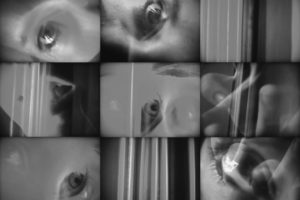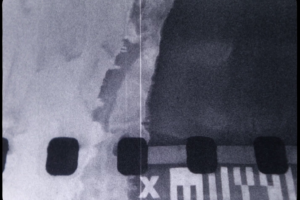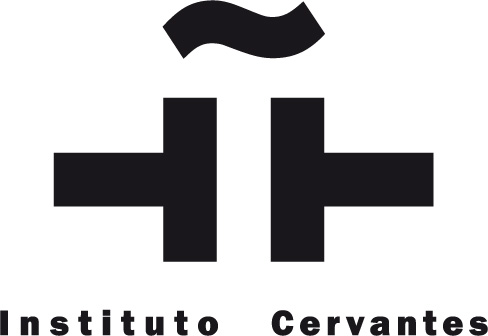Archive

Other States
09.10.2014 / 17:00
Ledoux
Program 2017 » Other programmes » Incisions and Imprints

FEDERICO LANCHARES, ARGENTINA 2016
b&w + colour, 6’, Digital file, v : SPANISH, sub : ENGLISH
ERNESTO BACA, ARGENTINA 2016
b&w, 3’, Digital file, v: NO DIALOGUE
SERGIO SUBERO, ARGENTINA 2010
colour, 9’, Digital file, v : NO DIALOGUE
IGNACIO TAMARIT, ARGENTINA 2015
colour, 2’, 16mm, v : NO DIALOGUE
JULIO FERMEPIN, ARGENTINA 2008
colour, 14’, Digital file, v : NO DIALOGUE
AZUCENA LOSANA, ARGENTINA – BRAZIL 2015
b&w, 3’, Digital file, v : NO DIALOGUE
PABLO MAZZOLO, ARGENTINA 2013
colour, 13’, 16mm, v : NO DIALOGUE
CLAUDIO CALDINI, ARGENTINA 2006-2009
colour, 8’, Digital file, v : NO DIALOGUE
Toen het in de nieuwe eeuw opnieuw mogelijk werd om in Buenos Aires smalfilm te ontwikkelen, volgde er een revival van Argentinië’s experimentele filmscène. Zoals dit programma laat zien, begonnen filmmakers uit Buenos Aires en elders zowel ter plekke als internationaal nieuwe films te vertonen die aansloten bij uiteenlopende tradities binnen de experimentele cinema maar die die tradities ook verderzetten en aan reflectie onderwierpen. Super 8 in het bijzonder is een aantal gemeenschappelijk gedeelde waarden gaan belichamen zoals de langzame creatie van beelden (in tegenstelling tot de normen van videoproductie), een geduldigere en weloverwogenere omgang met eender welk visueel effect en eender welke visuele aanpassing, het werken met én tegen de capaciteiten en beperkingen van een welbepaalde technologie. Eén positief effect van deze wending richting fotochemische film was dat de dialoog tussen jongere en oudere filmmakers werd uitgediept. Daarom werpt dit laatste programma – waarin lyrische landschappen, stedelijke portretten, abstracties gecreëerd vanuit fotorealistische beelden en complexe geluidsontwerpen samenkomen – een blik op de actuele situatie, terwijl ook het verleden van Argentinië’s filmcultuur aan bod komt.
La réouverture de laboratoires de développement pour les formats « amateurs » (Super 8 et 8 mm) à Buenos Aires au début des années 2000 a entraîné une renaissance du cinéma expérimental argentin. Comme ce programme le démontre, des cinéastes de Buenos Aires et d’ailleurs se sont mis à montrer, à domicile et à l’étranger, de nouveaux films qui s’inspirent, prolongent et repensent les différentes traditions du cinéma expérimental. Le Super 8 a permis d’incarner quelques-unes des valeurs qui lui sont propres : faire des films lentement (en opposition aux normes de la production vidéo), considérer chaque effet visuel et chaque modification d’une manière plus patiente et réfléchie, ou encore travailler avec (et contre) les capacités et les limites d’une technologie donnée. Un des effets positifs de ce retour aux procédés photochimiques a été l’approfondissement d’un dialogue entre de jeunes cinéastes et leurs aînés, dont cette séance porte la trace. Des études lyriques de paysages, des portraits urbains, des abstractions créées à partir d’images réalistes, ainsi que des bandes-sons complexes, font en effet le pont entre les productions contemporaines et le passé du cinéma expérimental argentin.
The return of small-gauge film developing to Buenos Aires in the new century was followed by a revival of Argentina’s experimental film scene. As this programme shows, filmmakers in Buenos Aires and elsewhere began to screen, locally and internationally, new films that take up, extend, and rethink various traditions within experimental cinema. Super 8 in particular has come to embody some commonly shared values: the value of making images slowly (in contrast to the norms of video production), of considering each visual effect and modification in a more patient and deliberate manner, and of working with and against the capacities and limitations of a given technology. One positive effect of this turn toward photochemical film has been the deepening of a dialogue between younger and older filmmakers, and hence this final programme – where lyrical landscapes, urban portraits, abstractions created from photorealistic imagery, and complex sound designs come together – looks at the contemporary moment while also pointing to the past of Argentina’s film culture.
ingeleid door / présenté par / introduced by
Federico Windhausen (23.10 / 16.15)
[ticket event=’1305′]
[ticket event=’1287′]
In partnership with

